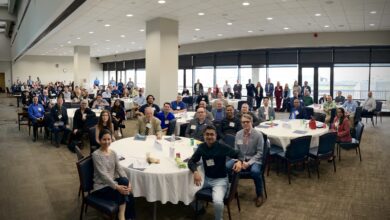
Introduction
Does going to work feel like it is a chore? Do you go to your place of employment merely to collect a paycheck? Once you are at work, do you feel like you are nothing more than a replaceable part of the overall machinery? Is the last day of the work week your favorite day of the work week because the weekend starts the next day? Do you get a case of the blahs the evening before the work week is about to begin, knowing that another week of work is fast approaching?
If so, take comfort in the fact that you are not alone. In fact, less than one-third of your peers in the United States feel engaged at work, with 51 percent reporting they were not engaged and 17.5 percent indicating they were actively disengaged. Worldwide, the numbers are even worse; as only 13 percent of people around the world reported that they were engaged at work.
Interestingly, “according to TINYpulse’s poll of 5,000 engineers, developers and other IT specialists working at 500 TINYpulse tech and non-tech company clients, tech workers are less happy than workers in other sectors in every key category.”
If you think about it, those numbers are mind-boggling. For example, if a baseball team were a representative sample of the entire U.S. workforce, only three of the players would be actively trying to win the game, four would be pretty much standing around doing nothing while two players would be trying to undermine the team’s efforts.
This raises the obvious question: why are so many employees disengaged at work?
The Way Work is Designed
There is an old saying that, “organizations are perfectly designed to get the results that they get.” If you think about your organization in this context, perhaps the frustration you may be feeling will not be so surprising. After all, do you work for a boss who basically tells you what to do and makes all of the key decisions? Are you involved in setting goals, approving work schedules and/or managing performance? Do you know how much value you contribute to your organization?
If the answer to all or most of the above questions is a resounding, “no,” then that probably explains why you are feeling the way you do about work. Even though you may be a skilled engineer or technical professional, if you are working under a design that does not enable you to unleash your skills and abilities, you are going to feel the way that most other employees around the world feel ” frustrated and disenfranchised.
Let’s look at the way work is typically designed in a bit more detail. It probably looks something like this, which we refer to as a Stage One Team:
 As you can see, under this design, the supervisor makes all of the key decisions, while each employee is merely a worker whose job is to do as he is told. All of the weight falls on the shoulders of the supervisor while each employee’s primary objective is to do his job and nothing more.
As you can see, under this design, the supervisor makes all of the key decisions, while each employee is merely a worker whose job is to do as he is told. All of the weight falls on the shoulders of the supervisor while each employee’s primary objective is to do his job and nothing more.
As an engineer or technical professional, your job probably involves analyzing, developing and/or designing complex systems, at least to some degree. If you could apply your skills to analyze your work systems, you are likely to conclude that they are perfectly designed to produce employees who are unhappy and in many cases downright miserable.
A New Way of Doing Work
The corollary to the saying about organizations being perfectly designed to get the results that they get is that, “if you want different results, you need to change your design.” Here is the design, which we refer to as a Stage Five team, that we have helped other organizations implement.
In our view, this approach is the future of work because it is a design that enables everyone to become involved, engaged, well developed and committed to the mission. Secondly, it encourages everyone to step up and become a leader since each member is, in a sense, a part owner of the team. Lastly, it frees up the supervisor/team leader to focus on higher-level work such as strategic planning or benchmarking, important tasks that individuals of this caliber rarely have time to do.
While this approach may seem radical to you, many organizations have already adopted it and are enjoying increased profits and productivity, improved performance and much higher employee commitment.
How Do You Build Teams of Leaders?
Rome wasn’t built in a day and neither are high-performing teams of leaders. Building such teams takes senior-level commitment, time, energy, support and patience. Moreover, six key components are typically built into the design and implementation process to make this a reality. They are:
- The Five-Stage Model ” this is used as the framework for thinking to guide the team during its transition from a Stage One team to the end state, which is Stage Five.
- Systems design ” to create the right design, you must first evaluate your environment, processes and culture and then ensure you have the right management systems (i.e. structural, technical, decision-making and information, people, rewards and renewal systems.)
- Team processes ” your processes (e.g. core work processes, on-boarding, off-boarding, performance management, etc.) must also be properly designed and aligned.
- Value creation model ” each team member needs to know how much value he or she and the team create, so a model must be designed to provide this information.
- Knowledge management ” managing the knowledge of each member will provide the team with optimal flexibility and enable everyone to step up and provide leadership.
- Visual management ” the team’s physical plant needs to be designed in a manner that connects the team around a sense of purpose and reinforces the other design elements.
What Will Be the Impact of Such an Approach?
From an organizational approach, as we stated earlier, you can expect to see outstanding results. For example, one manufacturing plant that adopted this strategy became the industry standard in terms of performance, saw the size of its workforce double, and accomplished this with only one supervisor overseeing the work of 300 people. As another illustration, a financial company built teams of leaders and saved hundreds of millions of dollars because the employees found numerous opportunities for efficiencies. That company is now in the top one percent of its industry.
From your perspective as a potential member of a team of leaders, you can expect to grow and develop at a rapid pace and, maybe for the first time, be part of the game. By this we mean you will be involved in the management of your team to an unprecedented degree, participating in such things as planning and goal-setting, leave administration, tracking and managing performance, and so on. Moreover, you can also expect to develop professionally at a much higher rate than you are used to, since the team will quickly realize that knowledge will help give it a competitive advantage. When this happens, work will no longer be a burden; it will be an opportunity to work with other committed people on something that is bigger than all of you.
You can also apply this concept to some of the collateral work teams you are likely to be on. Wouldn’t it be great to help transition these teams to higher stages in order to make them more effective and efficient?
Conclusion
Building teams of leaders is not an easy thing to do; but it can and has been done. The good news is that if you take the time to do it right, the payback will be more than worth it.
Paul Gustavson is an organizational design consultant and the founder of Organization Planning & Design, Inc. (OPD), which helps companies around the world create and sustain high-performance teams. He is the co-author of The Power of Living by Design and Running into the Wind.
Stewart Liff
is an HR and visual management expert, and the president and CEO of the consulting company Stewart Liff & Associates. He is the author or co-author of six books, including
Managing Government Employees and Seeing is Believing.






